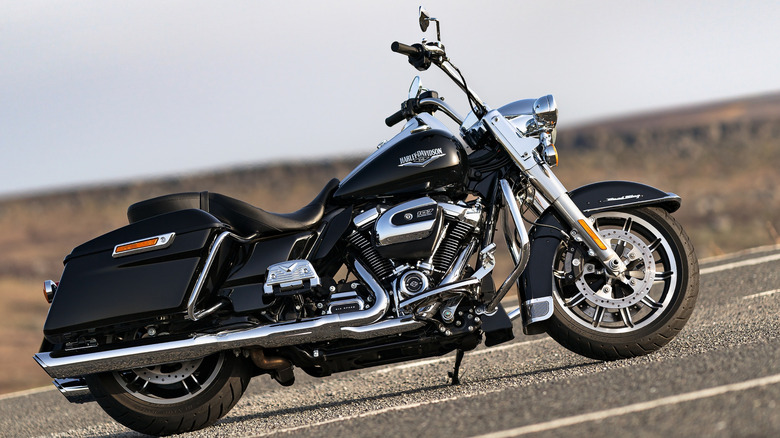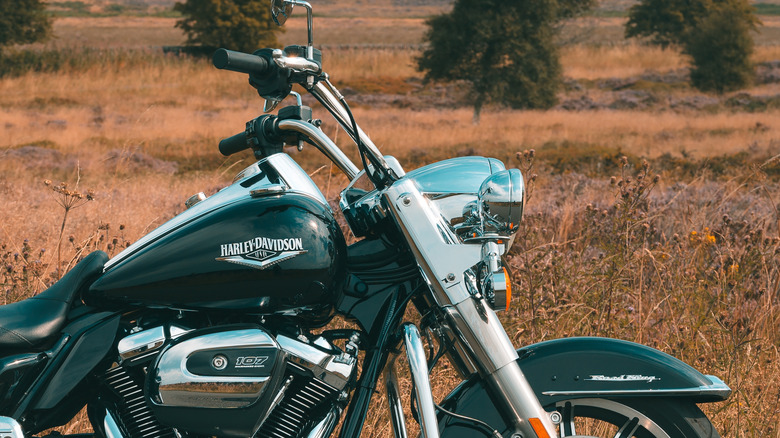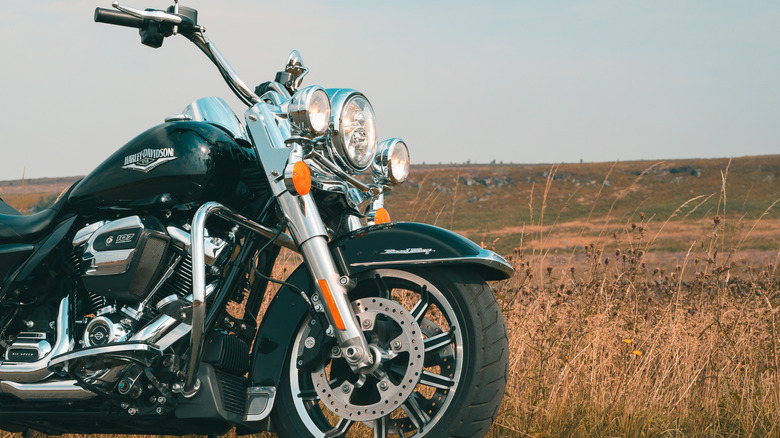Harley-Davidson Twin Cam 103 Vs. Milwaukee Eight 107: What's The Difference?
Harley-Davidson. That's as American as it gets. There's nothing like the feeling you get when you see a massive Harley parked out on the driveway on a Saturday afternoon, gleaming under the weekend sun. These bikes are cherished not only in the U.S. but also worldwide, providing a wide range of options that can thrill even the most dedicated motorcycle critic. However, while many know Harley for its immaculate line-up of hogs, from your Softails, Road Kings, and Road Glides, others know it for that and more. See, as much as Harley-Davidson is about its motorcycles, the company also has a reputation for its expertise in engine manufacturing.
When business partners and close friends William Harley and Arthur Davidson were starting out, they tinkered with single-cylinder engines meant to power motorized bicycles. It is this effort that bore the famed V-Twin, a well-crafted piece of equipment whose very essence remains today. From there, Harley debuted several engines over the decades, from the Panhead, Knucklehead, and Shovelhead down to the Evolution and Revolution engines. However, although all these engines are special in their own right, a few of them have as much presence as the Twin Cam 103 and Milwaukee Eight 107, nuanced beasts that have carried most Harleys through the 2010s.
These two engines differ in several ways, such as their displacements and number of camshafts. Nevertheless, the Milwaukee Eight is superior in various aspects, offering better management of heat, noise, and vibration, improved acceleration, and greater overall power. Let's go over these engines against each other to see how they stack up.
The Milwaukee Eight 107 was a replacement to the Twin Cam 103
Harley-Davidson debuted the Twin Cam 103, a dual camshaft motor, in the early 2010s for its 2012 model year Dyna and Softail models. The 103 also came standard on a few Touring bikes. Regarding the Milwaukee Eight 107, a single, chain-driven camshaft motor, Harley introduced it in 2017 to replace the Twin Cam 103, which had previously replaced the Twin Cam 96 upon its introduction. By that respect alone, the Milwaukee Eight seemed to have had an upper hand, seeing that even Harley had deemed it worthy enough to replace the 103. The 107 came on a number of bikes, including the 2017 Road King, Road Glide, Street Glide, and Electra Glide models.
The two engines had several differences between each other, each of which gave them different performance values. Let's start with their power output. On release, the Twin Cam 103 was rated at 100 lb-ft of torque at 3,500 RPM. The engine's displacement was 1,690 cubic centimeters with a bore and stroke of 3.875 inches and 4.38 inches, respectively. As for its successor, the 107, Harley introduced a 1,750 cubic centimeter beast that embodied the very souls of all the V-Twins that had come before it. It featured a bore and stroke of 3.937 inches by 4.375 inches and had four valve cylinder heads (the 103 only had two for each cylinder) with a 50 percent improved flow as compared to the 103.
The Milwaukee Eight 107 has more torque but is quieter
The two engines also featured different compression values. The Twin Cam 103 had a ratio of 9.6:1, while the Milwaukee Eight 107's ratio came in at a higher 10.0:1. Additionally, the 107's torque was improved to 111.4 pound-feet at 3,250 revolutions per minute, which was about ten percent more than the 103. Harley noted that the 107 goes from zero to 60 11 percent faster than the Twin Cam 103.
Although the Twin Cam 103 had a number of good things going for it, like its beefy rumble and low-end torque, a lot of people complained about its heating issues. The heat was so bad it made riding difficult for some bikers, with most needing a better heat management system than the one on the Twin Cam. On the 107, Harley included a precision cooling strategy tailored to each bike that came with the new engine. The system ensures the engine's coolant targets the hottest areas, like the engine's cylinder head, to keep the mechanism from causing any discomfort to the rider. Additionally, Harley moved the exhaust catalyst and rear exhaust pipe to ensure the heat wouldn't get to the passenger.
The Twin Cam 103 was also reported to have noise issues, prompting Harley to install improved driveline components, lighter valves, and a single, lighter, chain-driven camshaft in the 107 to reduce powertrain noise. Harley also introduced a counter balancer that reduces engine vibrations by 75 percent. The engine's charging system outputs 50 percent more power to parts of the bike, such as accessory lighting and heated gear, improving the riding experience.


